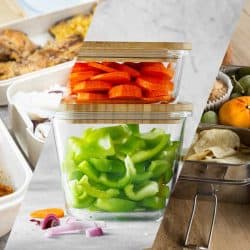Are you looking to upscale and revamp your food storage organization? Perhaps you’re simply wondering when your plastic food storage containers are no longer safe to use. Well, we've taken the time to research it for you. We will give you the right tips and tools to make the best decisions for your home.
When deciding whether to replace your plastic food containers or not, food safety is your top priority. Start by asking yourself:
- Are containers damaged, deformed, warped, or scratched?
- Do containers have lingering odors or appear discolored?
- Are containers food-safe? If manufactured before 2010, they potentially contain Bisphenol-A (BPA).
After this initial inspection, we recommend replacing plastic containers between 5 and 10 years. Wear and tear pose potential health risks if your product is damaged. Lastly, managing plastic food containers keeps your cupboard clutter-free and usably organized.
Now that was a lot of information to absorb all at once. Don't worry! We'll discuss in more detail what to look for on containers and any plastic food storage safety concerns. Keep reading for how to properly use, care for, and store food in your plastic containers, including ideas for how to use old containers and whether recycling is a viable disposal method.

When it's time to say goodbye to plastic containers
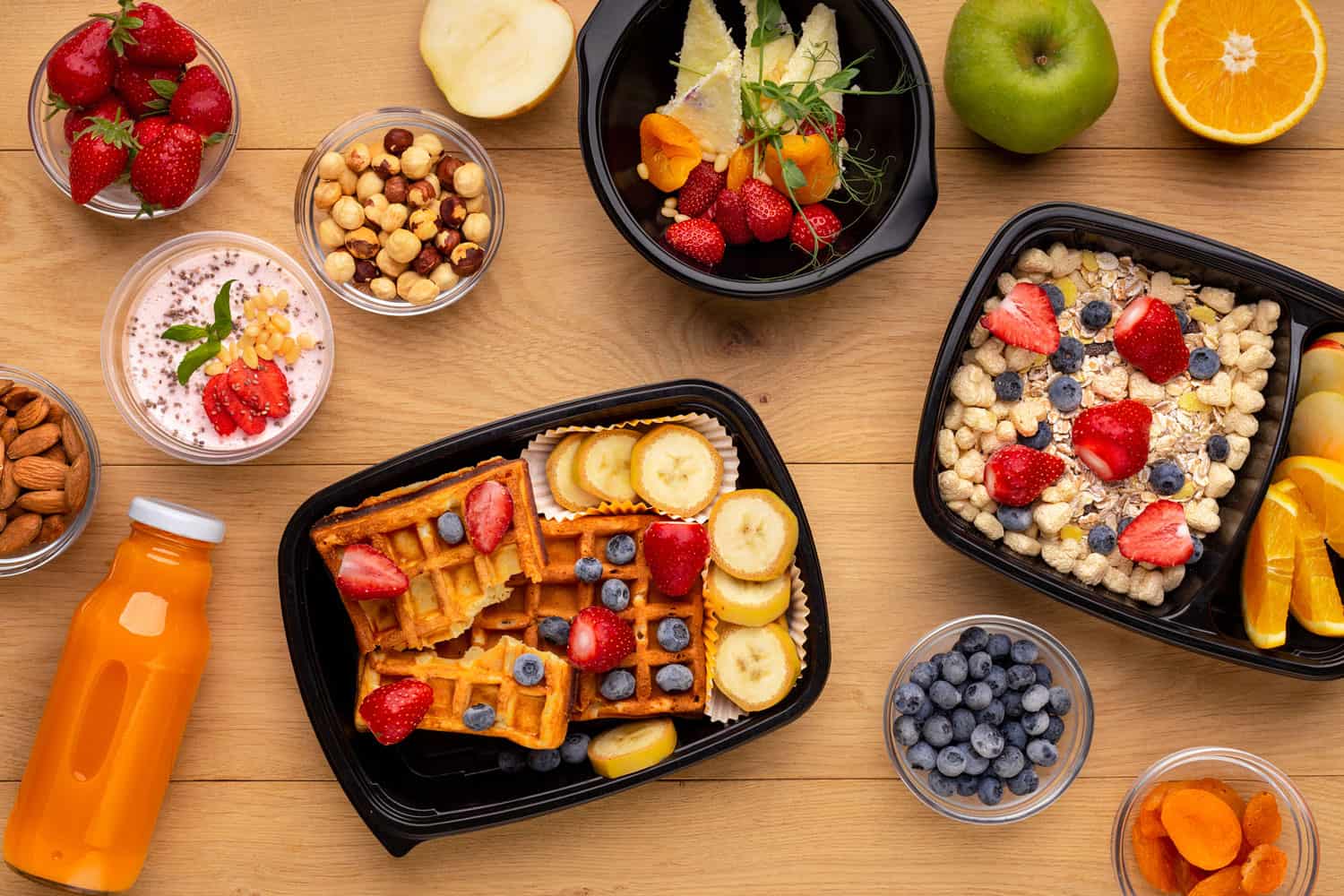
If you're asking, "How long do plastic food containers last?" the answer can be tricky --even more so, then, to know when it's time to recycle worn plastic containers. Plastic is so durable, it will not simply deteriorate on its own.
In fact, well-cared plastic containers can last an infinite amount of years --well beyond the 10-years recommended for replacement. So, here are some key tips to consider when determining when your containers are past their prime.
Damaged, Deformed, or Warped
Instinctively the safety of your food should be a top priority. Therefore, the integrity of the storage container is vital. If your plastic food containers are warped or deformed, the chances are they have suffered from exposure to multiple temperatures. It's common to refrigerate, freeze, or reheat your food in a microwave. Over time this breaks down the plastic compounds.
If your container is compromised, heating it can seep chemicals into your food without anyone knowing. Although most containers are deemed microwave-safe, it's best not to reheat your food in plastic storage containers. Another great tip is to ensure your leftovers are cooled before placing them into the plastic container. Always wash or rinse containers directly after use. This will help extend the life of your storage units.
Cut Up, Scratched, or Rough Surface
If you've ever eaten directly from a plastic container, those knife cuts and fork scratches create scuffs where bacteria can hide and breed. To prevent and preserve your plastics, consider using plastic utensils to prevent unnecessary scuff marks. If you've ever noticed how reheating or hot food can leave a rough bubble-like texture, these are also signs that it's time to ditch those containers.
Click here to see Bento Box with utensils on Amazon.
Funky Odor, Discoloration, or Fogginess
We've all stored leftover spaghetti in a plastic container then dreaded the miserable attempt on dishes the next day to remove the grease and the stain left from the tomato sauce. Odors may be present if your dishes don't get washed right away and bacteria have a chance to grow. If you can still smell a potent odd smell after a couple of good soapy washes, it's time to replace the containers.
Check out "How to Remove Food Smells And Stains From Plastic Containers?"
Proper Care and Food Safety
It's important to note when storing your leftover goodies that your containers are airtight to preserve freshness and quality. Ensure your refrigerator is not overstuffed as this constricts airflow, causing warmer temperatures encouraging bacteria breeding. Refrigerators and all chilled goods should always be kept below 41 degrees, best between the 34- to 38-degree temperature range.
Lastly, ensure your raw foods are not cross-contaminating or stored above your ready-to-eat foods.
Declutter to organize food storage
The first step to ditching unneeded containers is to pull all of your containers out and find their mates. If you end up with either multiple bottoms without lids or vice versa, toss them into the recycling bin. You do not need incomplete sets.
Click here to see Rubbermaid set on Amazon.
Next, consider whether your current containers are practical for your needs. Are they the right size and shape for use and storage? If not, you may want to consider upgrading to an organized, complete set or a couple of smaller sets that better meet your needs and taste.
How do you know if a plastic food container is recyclable?

When checking your items in your home or at the store, you'll want to look for a BPA-free stamp or the plastic recycling codes of 1 through 7. The safest codes to look for are plastics 1, 2, 4, and 5, as these codes are the most commonly accepted by curbside pickups with Waste Management. While codes 3, 6, and 7 are more likely to contain harmful chemicals, they're also not as typically recycled.
It's always a good idea to check with your local Waste Management about recyclable plastic types and always remember to clean and dry your recyclables before placing them out for pickup. We've found a useful guide at Good Housekeeping with a breakdown of each plastic compound and typical products.
Check out "Can You Recycle Plastic Food Containers? (Inc. Take-out Containers)" for even more details on recycling your plastics.
What can you do with old plastic containers?
The best part about clearing out old things is that it's easy to turn them into new, valuable items --or upcycle. You can use upcycled items around the house, garden, or garage by being just a tinge creative. The only limit on what you can create is up to you, but we've added some helpful ideas below to get you started:
In the Living Area
- Turn plastic containers into organizers for desks, drawers, or odds and ends.
- If they have compartments, use containers to separate your different batteries, craft, and office supplies.
In the Bathroom
- Use plastic containers to organize your rubber bands, clips, and bobby pins.
- Organize makeup brushes, lipsticks, nail polishes in upcycled containers.
- Make a handy First Aid Kit stored in a plastic container.
In the Workshop & Garage
- Separate and contain your loose nails, nuts, and bolts in compartmented containers.
- Keep smaller tools or loose pieces contained while working on your projects.
In the Garden & Greenhouse
- Use them for greenhouse pods and seed starters.
- Craft them into cute and creative DIY planters or create your very own mini herb garden.
In Closing
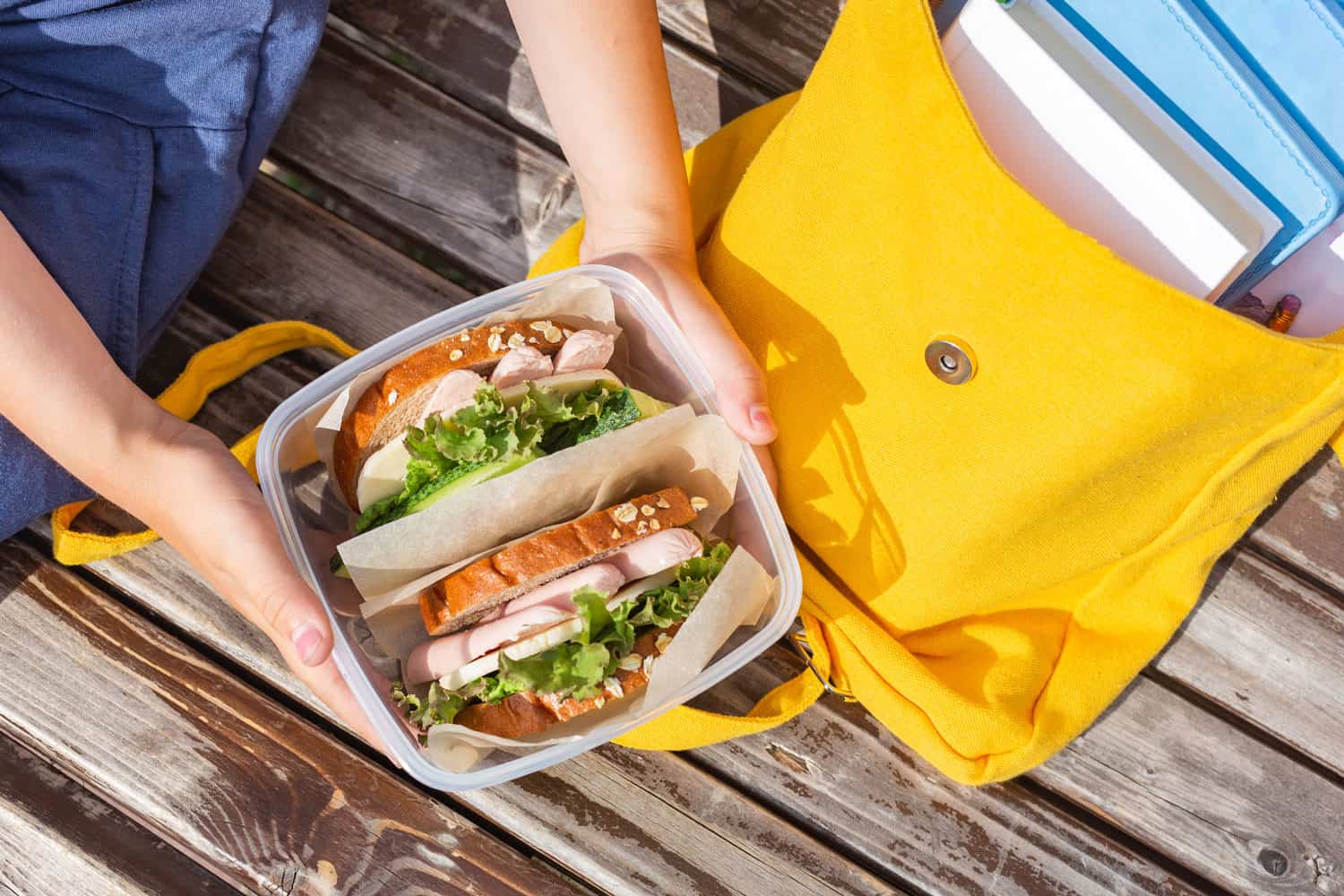
Now you know the ins and outs of when your kitchen plastics need a revamp. We can already see you imagining yourself shopping for a shiny new matching set. Remember to have fun while you recycle and reuse your old pieces victoriously in your DIY projects.



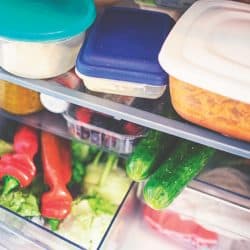
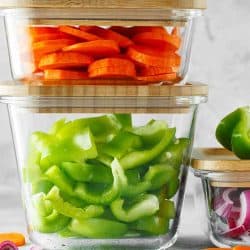
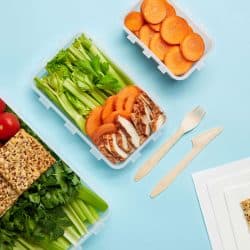

![Healthy food for kids concepts: well balanced school lunch box shot on blue table. School supplies are around the lunch box, How To Seal Plastic Food Containers [4 Cool Tricks!]](https://kitchenseer.com/wp-content/uploads/2020/12/Healthy-food-for-kids-concepts-well-balanced-school-lunch-box-shot-on-blue-table.-School-supplies-are-around-the-lunch-box-250x250.jpg)
